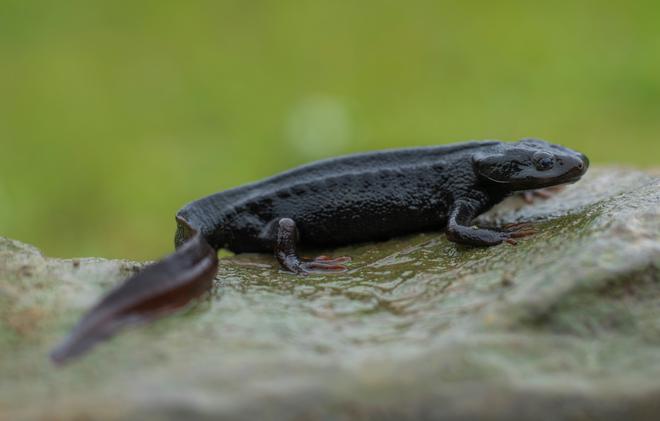A new-to-science cryptic amphibian has given violence-hit Manipur something to cheer about amid bloodshed and gloom.
A team of scientists trekked to the Khongtheng mountain range in 2022 to uncover the mysteries of the Tylototriton verrucosus, commonly called crocodile newt, whose members had long confused even the most experienced of herpetologists.
They ended up recording a new species of salamander — the Tylototriton zaimeng — in the Zaimeng Lake within the Koubru Forest Division in Kangpokpi district, one of the worst-hit by the ethnic violence that has scarred Manipur since May 3.
Zaimeng in the Liangmai Naga dialect means “puzzle” or “mystery”.
The study on the new salamander has been published in the latest edition of OGH Herpetozoa brought out by the Austrian Herpetological Society.
The authors of the study are Ht. Decemson, Hmar Tlawmte Lalremsanga, Premjit Singh Elangbam, Mathipi Vabeiryureilai, Parag Shinde, Jayaditya Purkayastha, Dmitriy V. Arkhipov, Andrey M. Bragin, and Nikolay A. Poyarkov.

“T. zaimeng was the outcome of an extraordinary mission that involved integrative taxonomic analysis, merging powerful tools of molecular research and morphological examination,” Prof Lalremsanga of Mizoram University’s Developmental Biology and Herpetology Laboratory told The Hindu.
He was a key driver of the study along with Dr. Poyarkov, who is associated with the Lomonosov Moscow State University and the Joint Russian-Vietnamese Tropical Research and Technological Centre at Hanoi.
The Tylototriton zaimeng had earlier been mistaken for its close relatives — the T. himalayanus and the T. verrucosus. Phylogenetic analysis revealed that the new salamander is a sister species of the T. panwaensis and T. houi found in northern Myanmar and southern China, respectively.
T. zaimeng was found to be a medium-sized salamander unlike any other. Its head is massive and wide, with a rounded snout and protruding supratemporal bony ridges, while a well-developed sagittal ridge adorns its crown.
“The creature’s limbs, short and elegantly formed, did not overlap when adpressed along its body. A wide and unsegmented vertebral ridge ran along its back, accompanied by 13-14 pairs of rib nodules, marking a clear distinction from its kin,” the study said.

“T. zaimeng displayed a stunning brown colouration, embellished with dull orange to yellowish-brown markings on its head, vertebral ridge, rib nodules, palms, soles, vent, and ventral tail ridge. Vomerine teeth, elegantly organized in two distinctly curved bell-shaped series, further differentiated this mysterious creature,” it said.
The researchers advocated the inclusion of the new salamander species in the International Union for Conservation of Nature (IUCN) Red List as a vulnerable species, emphasising the need for conservation efforts to protect it and its fragile habitat.







